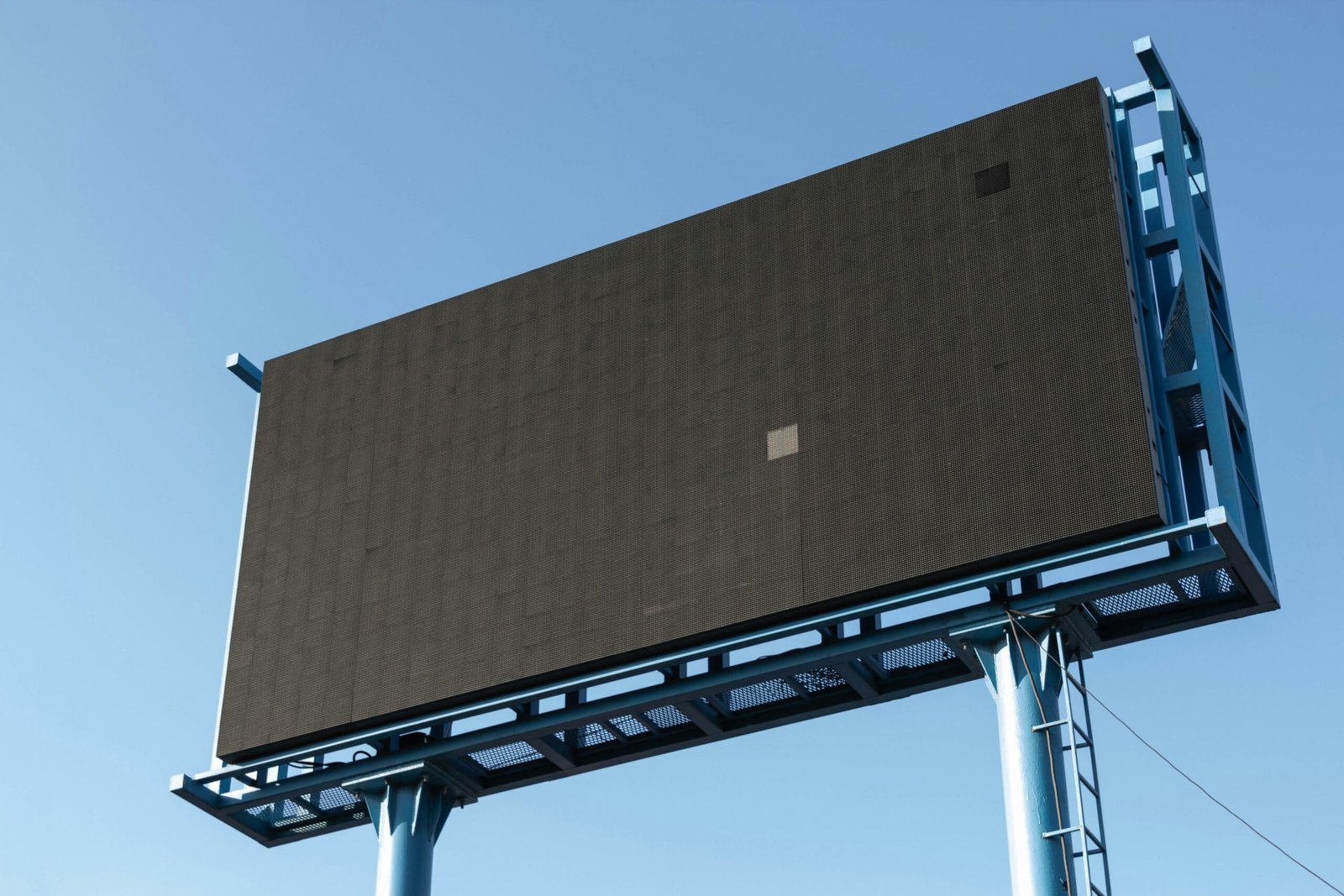Choosing the Best Monitor for Outdoor Use: A Comprehensive Guide
Understanding the Challenges of Outdoor Environments
Outdoor environments present a unique set of challenges that can significantly impact the performance and longevity of monitors. One of the primary concerns is brightness levels. Monitors designed for indoor use often lack the luminance required to be visible under direct sunlight. Outdoor monitors must possess higher nits value to ensure clear visibility even in bright conditions.
Glare is another critical issue. When sunlight reflects off a monitor’s screen, it can create significant readability problems. Anti-glare coatings or advanced technologies like matte displays can mitigate this issue, enabling users to see the screen clearly without the interference of unwanted reflections.
Temperature variations also pose significant challenges for outdoor monitors. These devices need to operate efficiently across a broad range of temperatures, from the freezing cold of winter to the sweltering heat of summer. Monitors equipped with thermal management systems or built with materials that can withstand extreme temperatures offer improved reliability and longevity in diverse weather conditions.
Humidity is yet another factor that cannot be overlooked. High levels of moisture in the air can lead to condensation inside monitors, causing malfunctions or even permanent damage. Therefore, outdoor monitors often come with sealed designs or conformal coatings to protect against moisture ingress.
The potential exposure to dust and water also necessitates rugged construction. Outdoor environments can be dusty and wet, making it imperative for monitors to meet specific ingress protection (IP) ratings. Higher IP ratings indicate better resistance to solid particles and water, ensuring that the monitor continues to function smoothly even in unforgiving conditions.
In light of these challenges, it’s clear why typical indoor monitors are not suitable for outdoor use. They lack the specialized features and durability required to handle the rigors of outdoor environments. Understanding these challenges is crucial for making an informed decision when choosing the best monitor for outdoor use.
Key Features to Look for in an Outdoor Monitor
Choosing the right monitor for outdoor use involves considering several critical features that ensure optimal performance in open-air environments. One of the foremost factors to consider is brightness, measured in nits. Outdoor monitors must have high brightness levels, preferably 1000 nits or higher, to combat sunlight and provide clear visibility. Without adequate brightness, the monitor’s display can become washed out and difficult to read in direct sunlight.
An anti-glare or matte screen is another indispensable feature that significantly enhances visibility by reducing reflections. Sunlight and other ambient light sources can cause distracting glare on glossy screens, making it hard to see the displayed content. Anti-glare coatings or matte finishes diffuse light and minimize this issue, ensuring an uninterrupted viewing experience.
Weatherproofing is crucial for outdoor monitors as they are continuously exposed to various environmental conditions. Look for monitors with high IP (Ingress Protection) ratings, such as IP65 or higher, which indicate robust protection against dust and water. Weatherproofing ensures that the monitor can withstand rain, dust, and other harsh elements, thereby prolonging its lifespan and functionality.
In addition to weatherproofing, rugged construction is essential for enduring physical impacts. Outdoor monitors should be built with durable materials that can resist damage from accidental drops, knocks, or other physical stressors. This durability is vital, especially in public spaces or industrial settings where the monitors are susceptible to wear and tear.
Temperature tolerance is another critical feature for outdoor monitors. These devices should operate effectively across a wide range of temperatures to accommodate the varying weather conditions encountered outdoors. Monitors with a broad operating temperature range can function reliably in both extreme heat and cold.
Finally, energy efficiency is an important consideration for outdoor monitors. Since these monitors are often used for extended periods, energy-efficient models help minimize power consumption, reducing operational costs and environmental impact. Look for monitors that are Energy Star certified or have similar energy-saving credentials.
Types of Monitors Suitable for Outdoor Use
When choosing a monitor for outdoor use, it’s essential to understand the different types available and their respective benefits and drawbacks. This knowledge enables informed decisions tailored to specific requirements concerning brightness, durability, and power consumption. Let’s explore some of the most common types of monitors and specialized outdoor solutions: LCD, LED, and OLED screens, along with sunlight-readable monitors, ruggedized displays, and portable options.
LCD (Liquid Crystal Display) monitors are prevalent due to their balanced performance and cost. However, their visibility in direct sunlight can be limited. Enhanced outdoor LCD monitors with higher brightness levels, often termed as sunlight-readable, offer better visibility in bright conditions. Despite this, their power consumption can be higher compared to other types.
LED (Light Emitting Diode) monitors are an evolution of LCD technology. They use LEDs for backlighting, which generally results in brighter displays and lower power consumption. This makes them suitable for outdoor environments where electrical efficiency is a concern. The added brightness improves visibility under direct sunlight, making LED monitors a popular choice for outdoor usage scenarios.
OLED (Organic Light Emitting Diode) monitors are relatively new and offer superior color quality and contrast ratios compared to LCD and LED. Each pixel emits its own light, eliminating the need for a backlight. This contributes to lower power consumption and better performance in diverse lighting conditions. However, their higher cost and potential for screen burn-in under prolonged exposure to static images can be a downside.
Specialized outdoor monitors cater to extreme conditions. Sunlight-readable monitors, as the name suggests, are designed to maintain clarity under direct sunlight. They usually possess higher luminance levels and anti-glare coatings. Ruggedized displays are reinforced to withstand environmental factors like dust, moisture, and temperature fluctuations, making them ideal for harsh outdoor settings. Portable monitors provide flexibility for on-the-go professionals, combining light weight with outdoor-capable features.
Understanding these options helps in assessing which type of monitor aligns with your specific outdoor use case, balancing factors like budget, environmental conditions, and intended use.
Top Brands and Models to Consider
When selecting a monitor for outdoor use, it’s crucial to consider both reliable brands and specific models known for their robustness and visibility in diverse environments. Here, we present a curated list of top brands and their standout models, catering to various budgetary preferences and professional requirements.
Leading the industry is ASUS, known for its high-quality engineering and cutting-edge technology. The ASUS ROG Strix XG17AHPE is a favored choice amongst outdoor enthusiasts and professionals. This model boasts a 17.3-inch IPS display with a full HD 1080p resolution, offering exceptional clarity and color accuracy even in bright sunlight. Its portable design, combined with a 240Hz refresh rate and adaptive sync, ensures smooth visuals, making it excellent for gaming and high-performance applications.
Another formidable contender is Samsung. The Samsung OH85N, part of their OHN Series, impresses with its 2500 nits brightness and anti-reflective coating, ensuring readability in direct sunlight. This 85-inch monitor is built to withstand extreme outdoor conditions, with IP56-rated dust and water resistance. It is an optimal solution for outdoor advertising and informational displays.
For those seeking cost-effective options, AOC offers commendable models such as the AOC e1659Fwu. This 15.6-inch portable monitor features a convenient USB 3.0 connection and a bright, anti-glare screen. While budget-friendly, it doesn’t compromise on portability and performance, making it a versatile choice for outdoor business presentations and on-the-go productivity.
User reviews provide invaluable insights into real-world performance. The ASUS ROG Strix XG17AHPE, for instance, receives high praise for its transportability and long-lasting battery life, crucial for outdoor activities. Samsung OH85N is lauded for its durability and vivid display under various weather conditions, making it a staple in outdoor advertising. Conversely, the AOC e1659Fwu garners appreciation for its affordability and user-friendly setup, suitable for casual use.
By considering these top brands and models, users can make informed decisions tailored to their specific outdoor monitor needs, whether for professional, recreational, or business purposes.







